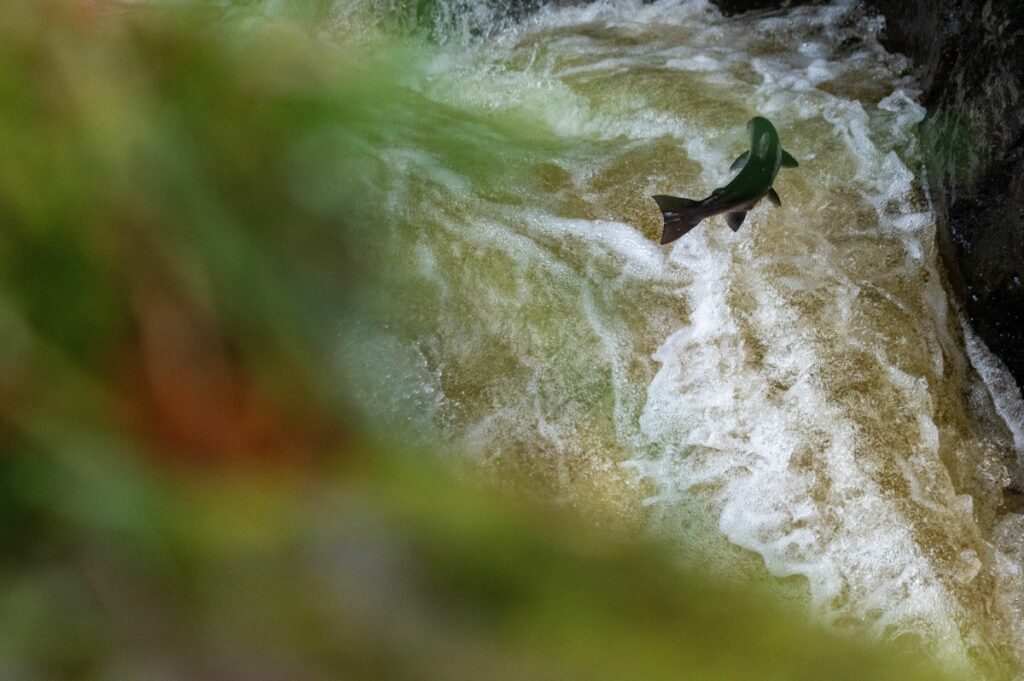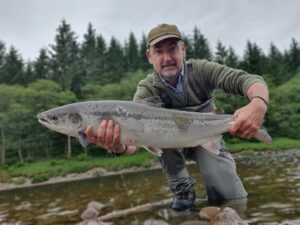Fish farms are part of the solution

Jon Gibb says the aquaculture sector is one of the few that has demonstrated its willingness to help save the king of fish
Bob Dylan famously sang: “You don’t need a weatherman to know which way the wind blows.”
This is exactly how I feel in the twilight years of a career managing wild salmon stocks on some iconic Scottish rivers.
The research is done, the story is clear – Atlantic salmon in UK rivers are in deep trouble.
We don’t need more science to tell us that. What we need now is affirmative action before it is too late.
In the latest species reassessment at COP28, Atlantic salmon in Scotland were reclassified as endangered on the International Union for Conservation of Nature’s Red List.
This is due to a 50% decline in UK populations since 2006 and up to an 80% decline predicted by 2025.
Sir David Attenborough recently predicted on the BBC’s Wild Isles series that “Atlantic salmon could be extinct in our rivers within the next two decades.”
This means that the next three to four generations of salmon could be the last we will see.
Salmon has been around for more than six million years and we are now facing the real possibility that they could be extinct within our lifetime.
This is why I see the £1.5m Salmon Scotland Wild Fisheries Fund, which I am delighted to coordinate, as a vital and timely initiative to play its part in the conservation and rehabilitation of Atlantic salmon.
And I am particularly pleased that the members of Salmon Scotland are welcoming applications from throughout Scotland this year.
Because despite what the small but vocal group of activists may preach ad nauseam, it is not just the west coast that has experienced these dramatic declines.
Salmon on some of the major east coast rivers has actually declined at a faster rate than west coast rivers in recent years: an inconvenient truth if you blame salmon aquaculture for the declines.
Take the Girnock Burn, for instance – a key spawning tributary on the River Dee that has been monitored closely by government scientists since 1966. In past years, hundreds of fish returned to spawn. In 2023, they only recorded a single pair.
That alone should be enough of a wake-up call for anyone who cares about the future of salmon in Scotland.
Against this backdrop, major east coast rivers such as the Spey, Tay and Dee are now beginning to look at hatcheries again to bolster struggling stocks.
The Dee closed their own hatchery many years ago on the advice of scientists. Now they are using a hatchery in Stirling to rear salmon for restocking.
Significantly, none of these river managers blame salmon farming for their predicament.
And yet still a minority group of extreme “antis” continue to sound off in the echo chambers of social media.
Strangely though, these largely angling-based voices are now making questionable alliances with animal rights activists to address welfare issues on salmon farms, which is rather odd considering, let’s face it, anglers put hooks in fish for sport and would gladly shoot every living seal within a country mile of a salmon river. I feel their misplaced allegiances may soon come back to haunt them.

Jon Gibb with salmon
Making a difference
In my region, aquaculture measures through national regulation, synchronous fallowing, cleaner fish, reduced escapes, focus on deep-water sites and a gradual move to single-year class production have seen enormous improvements over the years.
Sadly, I would suggest that those who try to focus the blame solely on salmon farms for this crisis could actually hasten the decline if they succeed in their mission to remove all fish farms from the Scottish coastline.
The aquaculture sector is one of the few industries that has demonstrated its willingness to help.
Put simply, you could remove all farms and the problem would still exist.
Yes, it is human nature to look for an obvious smoking gun, but the reality is that the problem is far greater and more complex than merely blaming the most visible target.
Climate change in rivers and oceans, predation, super-trawlers, forestry, hydro dams, a burgeoning and hungry mackerel stock – take your pick.
Landscape scale habitat improvements – the current darling of much of the fisheries management world – might look great on a NatureScot funding application and will undoubtedly benefit the overall river’s ecology in many years to come. But will it actually be timely enough to stave off the extinction crisis being faced right now in many rivers?
The focus of the Wild Fisheries Fund is very much on practical and affirmative action at a riverbank level to address any of the 13 impacts identified in the Scottish Government’s recently published Wild Salmon Strategy.
This might include addressing freshwater predation (a recent study found that 50% of smolts on most rivers were lost on their downstream migration), responding to increased erosion and habitat loss through the effects of an altered climate or easing barriers to migration.
Hatcheries are clearly an area where shared skills and resources can be pooled.
Last year, the fund financed a DNA study on the River Carron to investigate the role of the hatchery in that river’s remarkable recovery.
Results are due out this year.
A living gene bank of local salmon has been started in Lochaber, with another planned for Argyll, all with Salmon Scotland finance.
Artificial rearing and reintroduction of fish can undoubtedly have negative effects when done on a healthy river system.
Where a river is nearing extinction, however, then it is a logical measure of last resort to use the last remaining genetic material to propagate a recovery from captive reared fish. The fund can potentially help with any such programmes.
The Wild Fisheries Fund is currently seeking applications from local fisheries management organisations from all around Scotland. It closes on 31 March. Let’s hope that we have not left it too late to save the king of fish.
Jon Gibb is a Fisheries Manager and Co-ordinator of the Salmon Scotland Wild Fisheries Fund. To make a grant application or to find out more, visit www.wildfisheriesfund.co.uk

